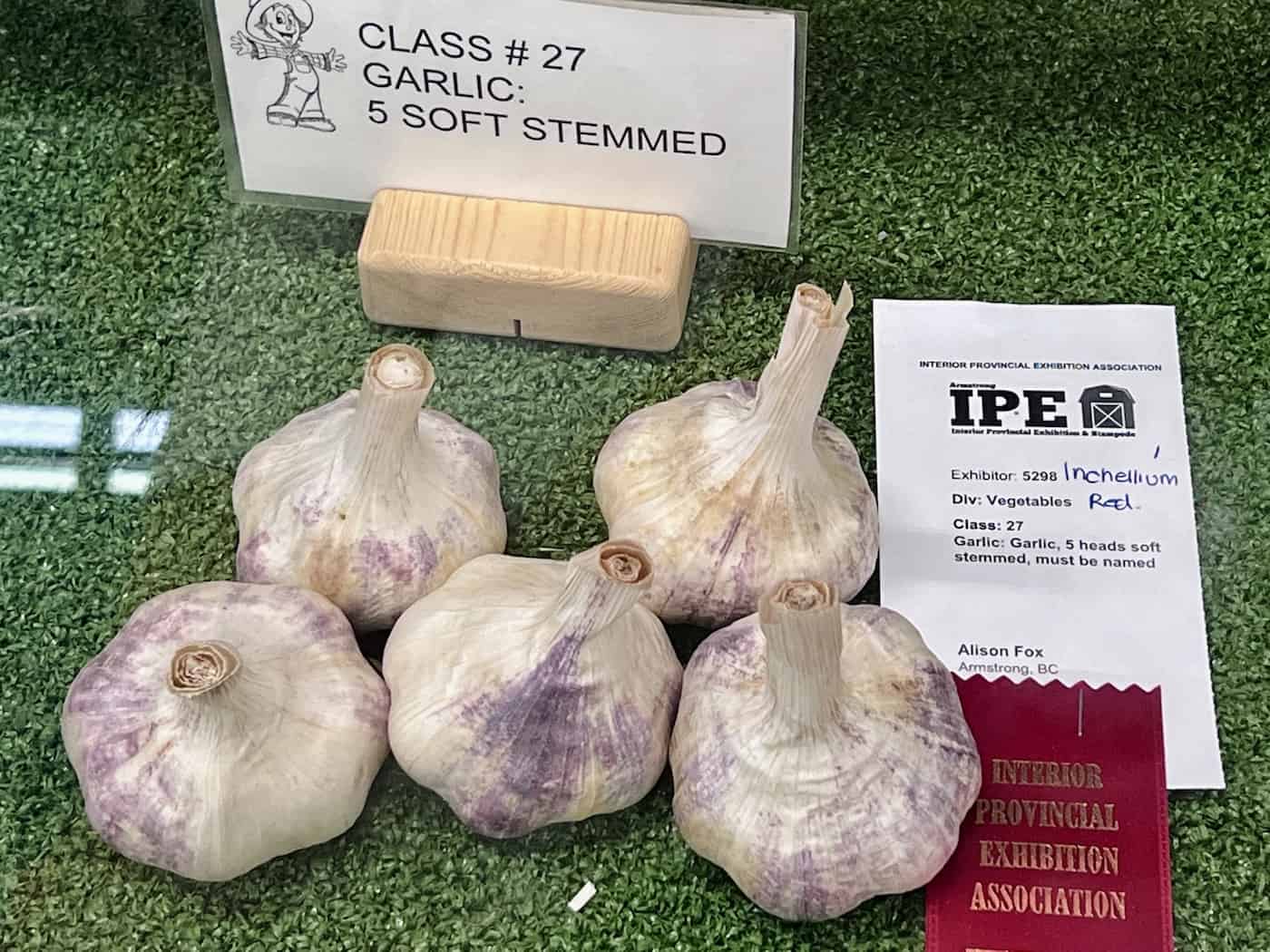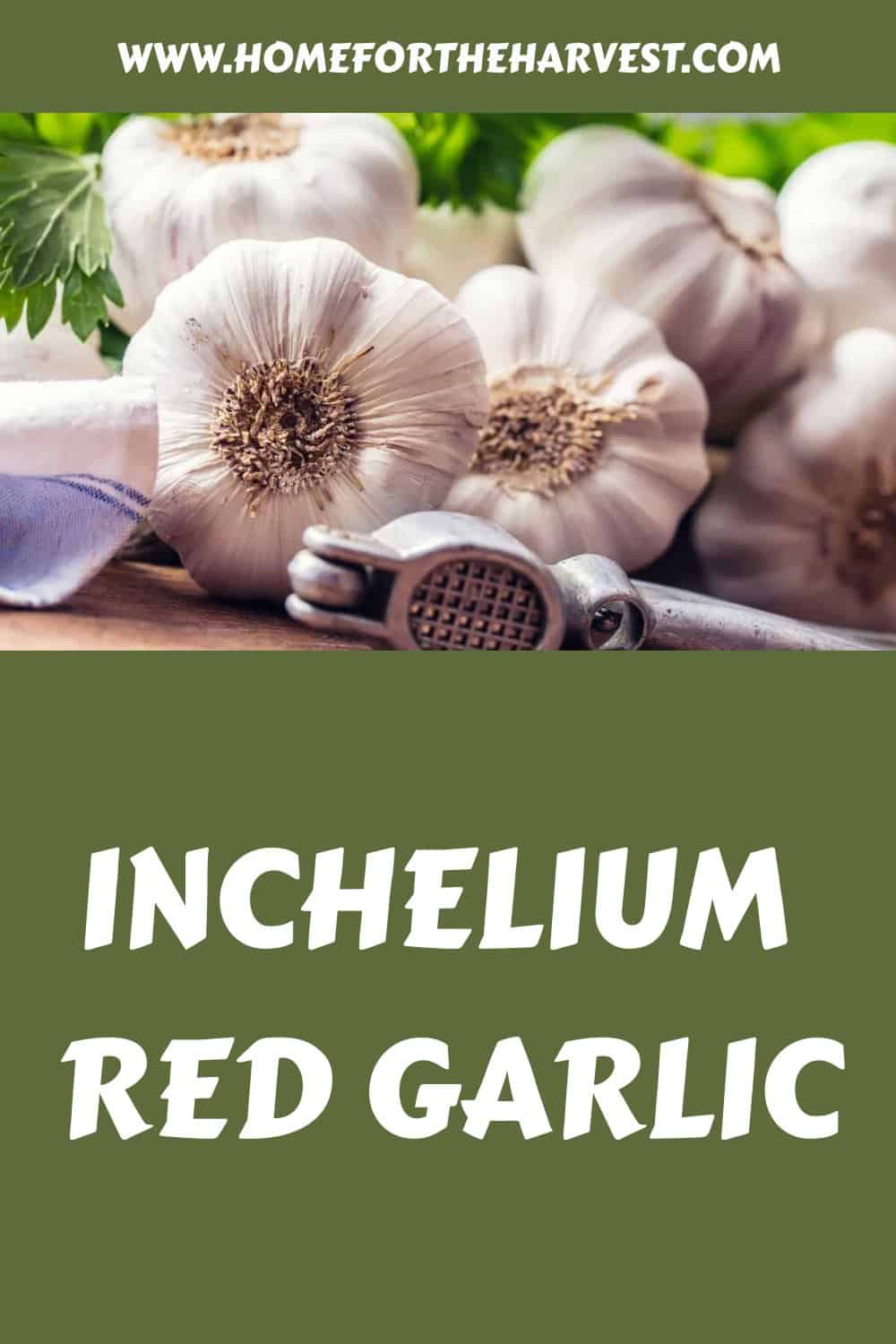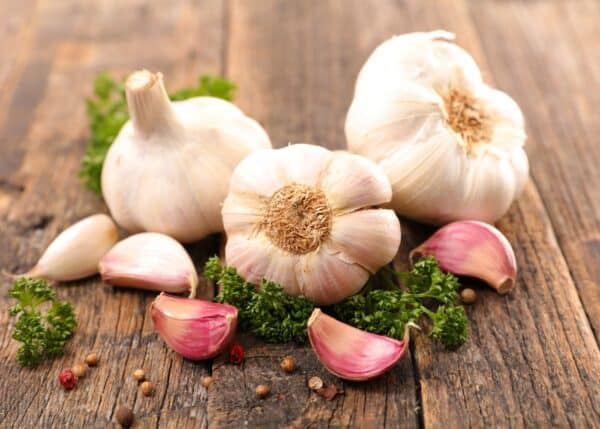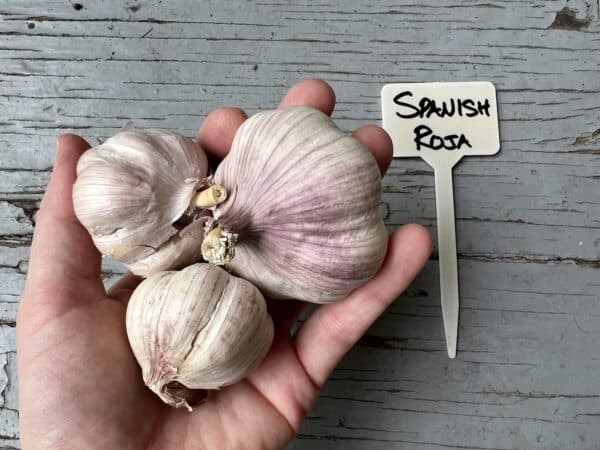Inchelium Red garlic is a gourmet heirloom softneck artichoke variety celebrated for its mild yet complex flavor profile. Grown for generations in Washington State, this variety is characterized by its large, flattened bulbs with multiple layers of white and purple-hued cloves. Inchelium Red stands as both a culinary delight and a testament to the rich agricultural heritage of North America.
Introduction to Inchelium Red garlic
The Inchelium Red garlic variety has a rich history and a unique place in the culinary world. It is an American cultivar from Inchelium, Washington. It offers a mild yet complex flavor profile that has caught the attention and praise of culinary experts as one of the best-tasting softneck garlic varieties.
This variant belongs to the softneck artichoke category of garlic, characterized by large flattened bulbs layered with a generous amount of cloves. A typical bulb of artichoke garlic houses 12-15 cloves, potentially boasting up to 20. The outer large cloves encircle a core of smaller cloves, all presenting a beautiful white and purple hue.
“Inchelium Red garlic, which is native to the land around Inchelium, Washington, is the oldest strain of garlic grown in North America.”
Scott Weybright, College of Agricultural, Human, and Natural Resource Sciences, Washington State University
Its flavor is mild yet lingering, making it a fantastic addition to many dishes, including being a delightful component in mashed potatoes and a top choice for baked garlic recipes. It imparts a gentle yet pronounced garlic essence, allowing it to blend seamlessly while still adding a depth of flavor.
Inchelium Red is revered not just for its flavor but also for its robust growing characteristics. It adapts well to different climate conditions, thriving in both northern and southern states. It showcases a vigorous growth pattern and tends to produce large bulbs exceeding 3 inches.
Given its softneck characteristic, it allows for easy braiding, thanks to its flexible stalks and the different sizes of bulbs it yields. In terms of storage, it has a shelf life of 6-9 months under appropriate conditions, a significant advantage for both commercial growers and home gardeners.

Flavor profile of Inchelium Red garlic
Inchelium Red garlic offers a mild yet complex taste that gradually reveals its layers. Initially presenting a smooth, pronounced garlic flavor, it gently transitions into a distinctive heat, finally mellowing out to a pleasant and lingering aftertaste. Perfect for those who appreciate a nuanced garlic experience, it shines especially when baked, melding seamlessly into dishes like roasted vegetables or mashed potatoes.
How to grow Inchelium Red garlic at home
Softneck garlic is typically planted in the fall and harvested in early summer. Here are the basic steps for growing your own softneck garlic at home:
Soil preparation
Begin by choosing a sunny location for planting. Softneck garlic prefers well-draining soil. Loosen the soil with a fork or tilling machine to about 12 inches deep. Incorporate a 3-inch layer of compost or well-rotted manure to enrich the soil.
For optimal growth, maintain a soil pH of 6.0 to 7.5. You can adjust the pH with lime or sulfur based on your soil test results.
Finding seed garlic cloves
Purchase certified disease-free garlic bulbs from a reputable nursery or seed provider. Avoid using garlic from the grocery store, as they might be treated or could bring diseases to your garden.
Planting softneck garlic
Break apart the garlic bulb into individual cloves immediately before planting. Plant the cloves pointy-end up, about 2-3 inches deep and about 6 inches apart. Water deeply after planting In colder regions, mulch the garlic bed with straw or leaves to protect cloves from severe cold and freeze-thaw cycles.
Watering garlic
Water your garlic in the fall, and even once in awhile throughout the wintertime if the ground isn’t frozen. In the spring, water the soil thoroughly once a week, allowing the soil to dry between waterings. You may need to water more during a spring drought if there in not much natural precipitation. Reduce watering as the harvesting time approaches; this helps the bulbs to mature and the outer layers to dry.
Fertilizing garlic plants
If a soil test indicates nutrient deficiency, mix in a balanced slow-release fertilizer or natural nutrient source at the time of planting in the fall. In spring, once the leaves begin to grow, feed with a high-nitrogen fertilizer to promote healthy foliage. Stop fertilizing once the garlic starts bulb formation.
Removing garlic scapes
Though softneck garlic does not typically produce scapes (flower stems), if they do appear, it’s usually best to remove them. Cutting off the scapes allows the plant to direct more energy towards the bulb.
Harvesting softneck garlic
Softneck garlic is usually ready for harvest in mid-summer when the lower leaves start to turn brown, but the top leaves are still green. Loosen the soil around the bulbs with a fork, then pull the bulbs out. Do not wait for all the leaves to turn brown, as the bulb wrappers may begin to degrade, affecting storage quality.
Curing and storing garlic
After harvesting, lay the garlic in a warm, dry place with good air circulation for 2-3 weeks. Once cured, trim the roots and stalks and brush off any remaining soil.
Store in a cool, dry place. Softneck garlic bulbs store well, often lasting 6-9 months when properly cured.
Origin of Inchelium Red garlic
The Inchelium Red garlic variety has a rich history and a unique place in the culinary world. It is native to Inchelium, Washington, a small town within the Colville Indian Reservation in Ferry County. Inchelium Red is now one of the most popular heirloom garlic cultivars to grow.
“It originated on the Colville Confederated Tribes Reservation, in the community of Inchelium, Washington. It was growing in Inchelium far before the arrival of English settlers, in the 1700’s.”
Tribal Tribune, November 2020







